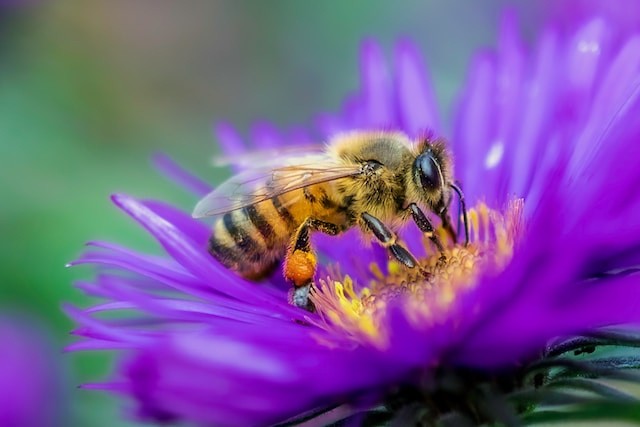Honey bees are among the most important pollinators in the world, as they visit and fertilize a wide range of flowering plants.
To obtain energy and water from flowers, honey bees feed on nectar, a sugary liquid secreted by floral glands.
A recent study by researchers from China, Germany, and the United States has revealed that honey bees can switch between two different feeding mechanisms, namely suction and lapping, to efficiently extract nectar from flowers of various sizes and sugar concentrations.
The study, published in Proceedings of the National Academy of Sciences, used high-speed videography to record the feeding behavior of honey bees under different experimental conditions.
Anatomy and function of honey bee mouthparts

The mouthparts of honey bees consist of a long, thin proboscis that includes a pair of labial palpi inside a pair of elongated galea (lobes).
This structure serves as a feeding tube, and the bee's hairy glossa (tongue) is situated inside. The glossa can extend beyond the proboscis tube and move back and forth to load nectar.
The glossa is also connected to a cibarial pump, which is a muscular chamber in the head that can generate negative pressure to suck nectar into the mouth.
The feeding mechanism of honey bees depends on the distance between their mouthparts and the nectar surface, as well as the viscosity of the nectar.
When the nectar is shallow or far from the mouthparts, honey bees use suction to draw nectar into their mouth, but when the nectar is deep or close to the mouthparts, honey bees use lapping to dip their tongues into the nectar and transport it by capillary action.
Also Read: Honey Bees Can't Resist Caffeine [VIDEO]
Honey bees use suction and lapping to feed on different nectar concentrations
The study by Jiangkun Wei from School of Aeronautics and Astronautics was conducted at Sun Yat-Sen University in Guangzhou, China.
The researchers pre-starved honey bees and fed them sucrose solutions of 10%, 30%, and 50% weight/weight contained in capillary tubes.
They added blue dye to each solution for visual contrast and recorded the feeding behavior of honey bees with a high-speed camera.
The results showed that honey bees switched between suction and lapping depending on the concentration of sucrose solution.
The researchers calculated that suction yielded higher uptake rates when ingesting low-concentration nectar, while lapping resulted in faster uptake when ingesting high-concentration nectar.
They also found that honey bees could voluntarily switch between lapping and suction when offered different nectar concentrations.
The study demonstrated that honey bees have a remarkable ability to adapt their feeding behavior to the varying resource conditions in nature.
By switching between suction and lapping, honey bees can optimize their energy intake and water balance when feeding on nectar of different volumes and concentrations. This flexibility can enhance their survival and reproduction in changing environments.
The study also provides insights into the evolution and ecology of plant-pollinator interactions. It shows that plants can influence pollinator behavior by modulating their nectar characteristics, such as volume, concentration, and depth.
Plants may use these traits to attract or deter different pollinators or to manipulate their visitation patterns or durations.
By changing their foraging tactics or preferences, pollinators may also react to these features. We can better preserve and manage these crucial components of biodiversity if we comprehend how plants and pollinators communicate through nectar exchange.
Related Article: Neonicotinoid Pesticides Harm More than Just Honey Bees
© 2025 NatureWorldNews.com All rights reserved. Do not reproduce without permission.





